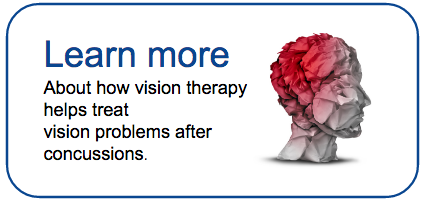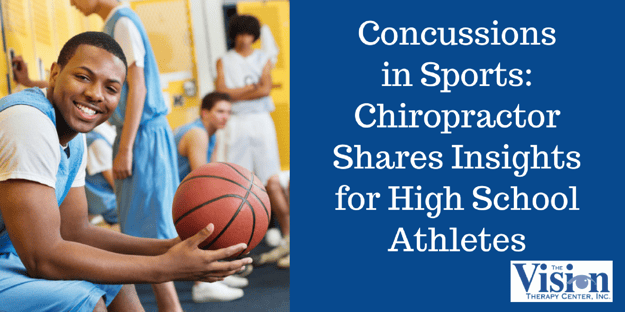
Awareness is growing regarding concussions in sports. To understand what’s emerging in the field beyond vision, we reached out to the chiropractor of the Milwaukee Wave, and tapped into his experience with head injuries.We’ve written a number of posts on vision and concussions, including the concussion-vision link with Dr. Christina Masters, baseline testing with Dr. Brandi Boan and how patients improve after vision therapy with Dr. Michael Gallaway.
In this post, we’re tapping the expertise of someone in our backyard: Dr. Michael Giammarco of Goodyear Chiropractic Health Center. Dr. Giammarco is a chiropractor who treats the Milwaukee Wave, a professional indoor soccer team, as well as athletes at the University of Wisconsin-Milwaukee.
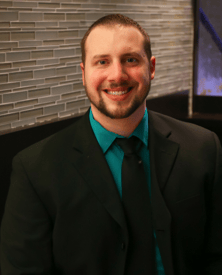 Dr. Michael Giammarco
Dr. Michael Giammarco
Goodyear Chiropractic Health Center includes a multidisciplinary team of specialists who provide a wide range of care, including Dr. Giammarco, who has turned his passion for sports into a career.
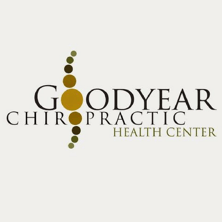
Witnessing Sports Concussions Firsthand
Dr. Giammarco received his Doctor of Chiropractic from Northwestern Health Sciences University, where his focus was on sports medicine and exercise rehabilitation.
His training also includes becoming a certified strength and conditioning specialist, emergency medical technician, and the “Official Chiropractor for the Milwaukee Wave,” Milwaukee’s professional indoor soccer team.
It’s this experience with the Wave, along with working with high school athletes, that has given him “a lot of exposure to sports-related concussions.”
Dr. Giammarco has performed many tests for active concussions, and this sideline experience has made him acutely aware of how important baseline testing is for sports today. “Before the season starts, you really want to have a baseline test,” Dr. Giammarco explained.
Concussions in Youth Sports and High School Sports Demand Baseline Testing
As we noted in this post on baseline concussion testing, Dr. Brandi Boan stated, “In a perfect world, baseline testing would be a high school graduation requirement.”
Dr. Giammarco agrees, noting that having a baseline established for a person is critical when it comes time to administer a Sports Concussion Assessment Tool (SCAT).
The SCAT is a standardized tool for evaluating injured athletes for concussions, and is typically used with athletes ages 13 and over. The SCAT5 is the most current sport concussion assessment; we’ll touch on that more in a bit.
Concussions in Sports: What you Need to Know
As Dr. Giammarco noted, concussions and sports have changed significantly over the last decades. “If you look at the trends for the last 5-10 years, things have changed so drastically,” he said.
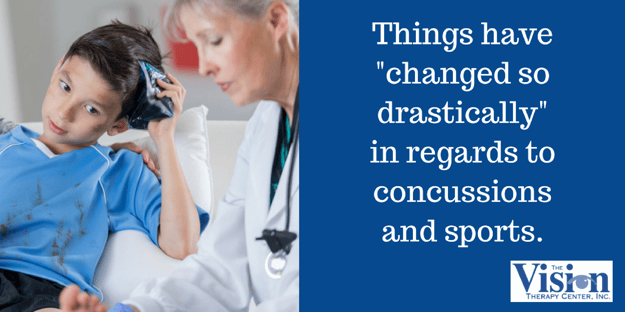
A few years ago, when a child “got his bell rung,” they could go back in the game. Today, there are strict concussion protocols and much more diligent monitoring.
We asked Dr. Giammarco a number of questions regarding sideline concussion testing, protocol for “return to play” and what it takes for an athlete to be cleared by a physician. Before we get to the questions, check out this video. It provides a good overview of concussions and athletics.
Q: What triggers the protocol for a head injury? Are there symptoms, or is it any time you see a significant hit?
Dr. Giammarco: When there is a significant hit during a game, that is absolutely a time to evaluate if a player has sustained a concussion. However, sometimes the smaller hits can still result in a concussion or it may take a varied amount of time for a player to start experiencing symptoms.
If a player begins to show symptoms, it’s better to play it safe than sorry and start the evaluation process.
Q: What is the protocol an athlete must follow before they can return to play after a concussion?
Dr. Giammarco: The protocol is the official procedure that, in the video above, is called “return to activity, ” or as the Wisconsin Interscholastic Athletic Association calls it “return to play.” There’s a lot of information on this page, but we’ll summarize the “return to play” below.
The “return to play” includes a series of steps. In order to resume activity, the athlete must be symptom-free and off any pain control or headache medications. The athlete should be carrying a full academic load without any significant accommodations. Finally, the athlete must have clearance from an appropriate healthcare provider.
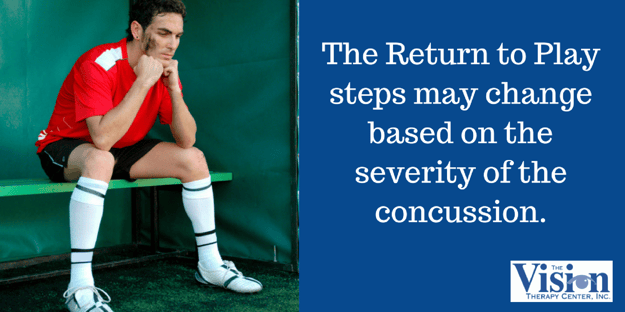
The five steps below are a guideline for returning concussed athletes, but it may change based on the severity of the concussion, or if there are multiple concussions involved.
The program allows for one step per 24 hours. The program authorizes a gradual increase in heart rate/physical exertion, coordination and then allows contact. If symptoms return, the athlete should stop activity and notify their healthcare provider before progressing to the next level.
STEP ONE: About 15 minutes of light exercise: stationary biking or jogging
STEP TWO: More strenuous running and sprinting in the gym or field without equipment
STEP THREE: Begin non-contact drills in full uniform. May also resume weight lifting
STEP FOUR: Full practice with contact
STEP FIVE: Full game clearance
Be sure to also check out the Return to Classroom tab, which notes that the athlete should return to full speed academics without accommodations before turning to sports.
This is also a great parent fact sheet regarding concussions in high school sports.
Q: Can you describe the SCAT5 test you perform - what are the aspects? Are there any other tools you have to use and perform?
Dr. Giammarco: The SCAT5 includes several tests that should be performed by the medical professional as a preseason screening tool or on-site during an athletic event. It includes tests in memory, balance, and neurological components to assess if there is a possibility an athlete sustained a concussion.
It can provide documentation and a comparison tool for the medical professional working with the athlete to detect any changes. It also includes some advice and guidelines for parents or guardians of the athlete.
NOTE: Here is a form for the SCAT5, provided by the British Journal of Sports Medicine, that details the test. This may not be the same as the vision and overall baseline testing we described in this post, but may include aspects. The Vision Therapy Center emphasizes that all students (and adults) should receive a functional vision test to establish a vision baseline.
Q: How many concussions can you have and still play sports?
Dr. Giammarco: This depends on each individual athlete. Depending on how significant the injury that caused the concussion and their recovery, it can vary from athlete to athlete. It is something that should be discussed with parents, players and their healthcare providers.
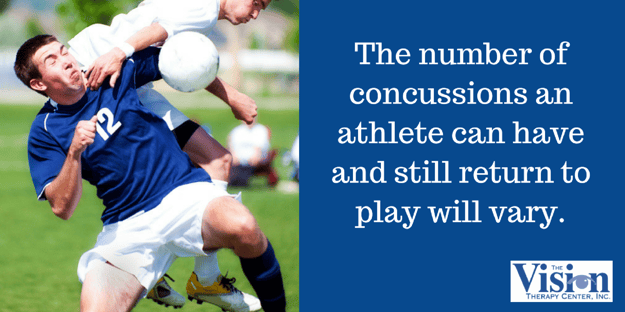
Q: What does an athlete need to be cleared to return to sports?
Dr. Giammarco: Athletes are able to return to play as their symptoms improve and they are able to increase the intensity of activity without their symptoms returning (see the protocol above).
In order to return to sport, an athlete must be symptom-free and have the clearance from a healthcare provider. Usually this would be the team’s athletic trainer or team physician.
This is crucial. Especially because in an instance where multiple, compounding concussions are sustained in a short period of time, it could lead to serious repercussions to the athlete’s brain function. This is something referred to as Second Impact Syndrome.
Q: Is there any way to prevent concussions in sports?
Dr. Giammarco: Neck strengthening is a great way to reduce the risk, however I believe the best way to prevent concussions is to educate parents, players and coaches on proper technique in contact sports to minimize high risk hits and how to recognize when a player is showing symptoms. This would allow for a decrease in the risk and reducing the time between the injury and the start of the recovery process.
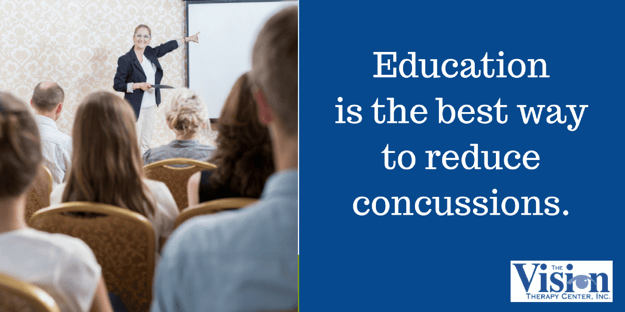
How Does a Concussion Impact an Athlete’s Vision?
When an athlete first comes to the sideline, Dr. Giammarco will immediately test to see if their vision is working correctly. They’ll test eye focusing, eye tracking and peripheral vision. Typical vision-related symptoms of a concussion can include:
- Blurry vision
- Lack of focus
- Double vision
- Nystagmus (uncontrollable eye movement)
Dr. Giammarco notes that his role on-field is to assess the athlete and determine if there are concussion symptoms. It’s not to treat the athlete. Treatment occurs down the line.
If treatment is required, as a chiropractor, he focuses on the musculoskeletal system. For vision-related issues, he refers out to a developmental optometrist, such as The Vision Therapy Center.
For any athlete and their parents, the emerging news about concussions can be scary stuff. However, the more we educate ourselves to protection measures; protocols after an injury occurs, and potential treatments for ongoing issues, the more effective we can be in terms of prevention and recovery.
For more information on the Goodyear Chiropractic Health Center, click here. To learn more about concussions and vision, click below.

